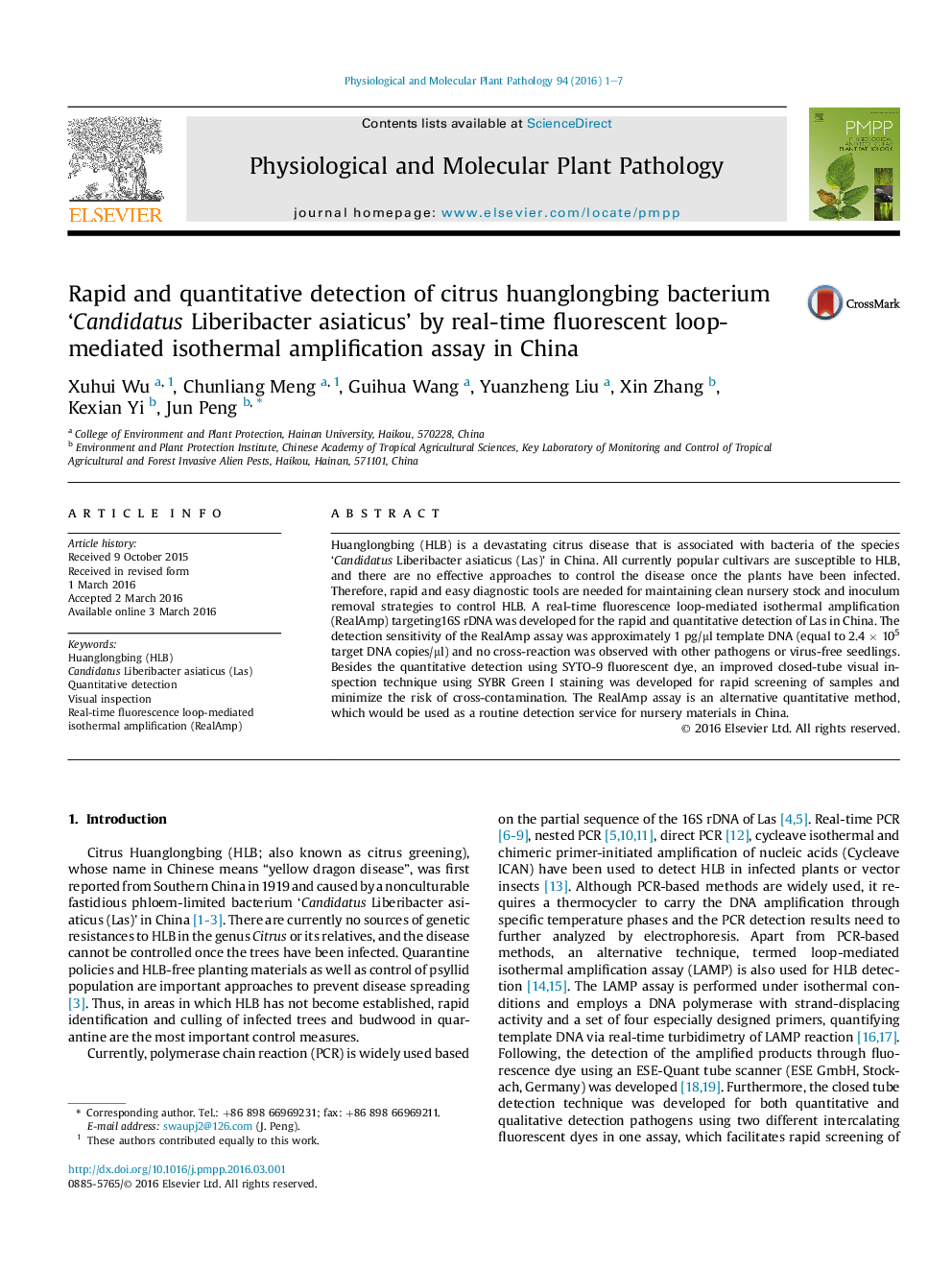| Article ID | Journal | Published Year | Pages | File Type |
|---|---|---|---|---|
| 2836190 | Physiological and Molecular Plant Pathology | 2016 | 7 Pages |
•A RealAmp assay was developed for quantitative detection of Las.•A closed-tube visual inspection system was developed for minimal contamination.•Quantifying Las in field samples was no significant difference compared to real-time PCR.
Huanglongbing (HLB) is a devastating citrus disease that is associated with bacteria of the species ‘Candidatus Liberibacter asiaticus (Las)’ in China. All currently popular cultivars are susceptible to HLB, and there are no effective approaches to control the disease once the plants have been infected. Therefore, rapid and easy diagnostic tools are needed for maintaining clean nursery stock and inoculum removal strategies to control HLB. A real-time fluorescence loop-mediated isothermal amplification (RealAmp) targeting16S rDNA was developed for the rapid and quantitative detection of Las in China. The detection sensitivity of the RealAmp assay was approximately 1 pg/μl template DNA (equal to 2.4 × 105 target DNA copies/μl) and no cross-reaction was observed with other pathogens or virus-free seedlings. Besides the quantitative detection using SYTO-9 fluorescent dye, an improved closed-tube visual inspection technique using SYBR Green I staining was developed for rapid screening of samples and minimize the risk of cross-contamination. The RealAmp assay is an alternative quantitative method, which would be used as a routine detection service for nursery materials in China.
